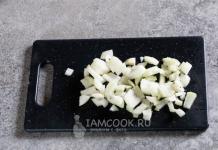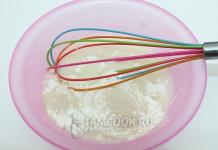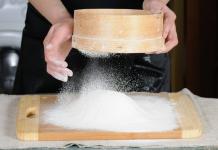Often people buy aquarium fish without thinking about what kind of tank they need. With such a purchase, it is very important to calculate the volume of the aquarium in liters. Much depends on this characteristic: how many pets will live there, the volume of water, the amount of soil, etc. In fact, every adult knows how to calculate the volume of an aquarium, you just need to remember the knowledge gained at school.
Why are calculations necessary?
It would seem that there is nothing easier - to buy a fish house, all the necessary components and place underwater inhabitants there. In fact, if the owner of the fish did not correctly calculate the volume of the tank, her pets may not live in it for long.
- to understand how many fish and plants will be optimal for a particular pet house;
- determine the amount of soil and fertilizers;
- even when calculating the dosage of medicines for pets, it is necessary to know the data of the aquarium.
The fish house should be comfortable for its inhabitants, then there will be no health problems for pets.
How is the calculation made?
To understand how to find out the volume of an aquarium, you need to resort to the queen of all sciences - mathematics. Calculations will help determine how many liters it will take to fill it, which heater and water filter to choose, which species of fish can exist in it. Correct calculations are the key to the longevity of underwater inhabitants.
To calculate the volume of the aquarium, it is worth preparing special measuring tools. The volume of the aquarium can be calculated using a calculator, a tape measure and a pencil with a piece of paper. When you have prepared everything you need, you need to follow the instructions and remember what you went through at school:
- calculate the volume of the aquarium, which has the shape of a parallelogram (this is a standard type of product) by measuring its length from the outside, depth and width;
- these three values in the aquarium should be written down on a piece of paper, they will be useful for further calculations;
- the volume of the tank using the measured numbers is calculated by the formula: internal length × internal width × internal height;
- the question remains how to calculate the internal values, for this you need to measure the tank wall, its thickness;
- the resulting figure must be multiplied by 2, then subtract it from the previously obtained external measurements, which will help to obtain internal numbers;
- then we substitute the values \u200b\u200bin the formula described above, and translate the resulting value into cubic liters (1 m 3 \u003d 1000 l) - this will be the volume of the aquarium or displacement.
There is an additional specific way to measure the volume of a tank. It is a little easier than the previous one. It is necessary to make calculations according to the formula: (H × D × D) × 0.001 (where H is the height in cm, D is the length in cm, D is the depth in cm). Thus, it will turn out to correctly subtract liters.
An aquarium is a glass vessel filled with water in which fish and plants live. When looking at the aquarium, a question arises for the owner of the apartment or office - how many liters are there in this aquarium?
The same question arises when you read the instructions for preventive and curative drugs. Therefore, a very interesting and controversial question - "How to calculate the volume of an aquarium?".
Of course, you can calculate it by pouring water out of it with a liter jar, but it is much easier to do this using a formula, and measuring by jars can be left for small round aquariums.
Step-by-step instructions for calculating the volume of your aquarium:
To begin with, we measure the dimensions of the aquarium being measured, for example: the width of the aquarium is 100 cm, the depth from the front to the back wall is 50 cm, and the height of the aquarium is 60 cm. That is, it turns out:
- 100 cm * 50 cm * 60 cm = 300,000 cubic centimeters;
Now, to get the number of liters, we multiply this value by 0.001:
- 300,000 cc * 0.001 = 300 liters;
As a rule, the height of the bulk part of the aquarium is less in order to avoid overflows of water and taking into account the aquarium ties, which are closed with a lid. With an aquarium height of 60 cm, as a rule, the ties are glued 3-5 cm lower and the height of the filling part is the same. 5 cm to screeds at a height of 60 cm is less than 10 percent: Total: It turns out that the estimated volume of the measured aquarium is 300 liters. But this volume is literally calculated - and we need a real volume.
Sooner or later, many aquarists are visited by the thought of replacing their home pond with a larger one or more interesting and original. There may be several options here: buy ready-made, order from a professional master or. For those who like to experiment and “work with their hands”, it is very important to think through and calculate everything in advance so that homemade aquarium lasted a long time, and did not fall apart in a day, creating a bunch of problems for the owner. To help the craftsmen was created aquarium calculator. Let's understand what it is and why it is needed.
 It is customary to call calculators electronic computing devices that have replaced mechanical ones and perform operations on numbers and algebraic formulas.
It is customary to call calculators electronic computing devices that have replaced mechanical ones and perform operations on numbers and algebraic formulas.
Among them there are specialized ones that perform calculations in one very narrow area. This is the aquarium calculator. What can be calculated with it:
- glass thickness;
- water volume;
- volume and mass of soil;
- amount ;
- lighting power;
- heater power;
- carbon dioxide content;
- stocking density of fish.
There are calculators for rectangular, cubic, corner, panoramic, cylinder aquariums.
Why is aquarium glass thickness important?
This indicator is in the first place for a reason. After determining the dimensions of the aquarium, the next step is to choose the glass of the "correct" thickness.
- Too thin is impossible: it will burst, the water will flood the neighbors, and all the fish will die.
- Too thick also does not make sense: it will make the structure heavier, reduce transparency and “hit your pocket”, because glass is about a third of the cost of an aquarium.
Yes, and the glasses themselves come in different brands and from various materials(acrylic, silicate, special hardened, etc.). And each has its own thickness standard.
How to calculate the thickness of glass for an aquarium
 Usually for making
Usually for making
- 5-30 liter aquariums take 4mm glass;
- 30-80-liter - 5 mm;
- 80-150-liter - 6 mm;
- 150-220 liters - 8 mm;
- 220-300 liters - 1 cm.
However, if non-standard (high, narrow, irregular shape), then this rule needs to be amended.
The quality of the glass also matters. For example, you can not use old window or display glass. They have sagging, inclusions of bubbles, a fatty film on the surface, and can also be damaged by welding and simply grow old.
If you plan to make an aquarium similar to the store ones, then you can simply measure the thickness of the glasses and add 1-2 mm. If there are no analogues in the store, then special formulas for calculating the strength of glasses will help. You will need data on the height, width, depth of the aquarium and the tensile strength of the glass.
Cons of these formulas: any errors lead to strange results, and the tensile strength of glass is often unknown.
Aquarium Glass Thickness Calculation: A Chart That Can Help
Do not create difficulties for yourself from scratch. Experts have long calculated the thickness of ordinary glass for an aquarium and entered the results into a table. Here is a table checked by many aquarists with good reviews, you can take note of it:

Stiffening ribs and couplers increase durability of an aquarium. These are strips of glass about 2.5 cm wide, additionally glued flat on top to the front and back walls, relieving stress from them and removing deflection. For long aquariums, they are simply necessary.
It is not at all necessary to use this particular plate, there are many others, both common and separate for the bottom and walls.
The most "advanced" option is to calculate the thickness of the glasses on an aquarium calculator. This is not only very convenient, but also right! After all, not all ordinary aquarists can understand the heap of complex formulas that go beyond the scope of average knowledge, and calculate everything even on a piece of paper, not to mention “in the mind”.
Developers pay attention that the calculation is made with significant reserves. And if suddenly as a result you get zero, then it is recommended to contact specialists with this question.
The aquarium calculator makes life much easier - enter the data, press the button, get the result! And in conclusion, we say: no matter what method you use, do not be too lazy to double-check the results, because it is better to spend more time on calculations and verification than on repairs and alterations.
All measurements are in mm
H— Liquid level.
Y- Reservoir height.
L- The length of the container.
X- The tank is wide.
This program performs calculations of the volume of liquid in rectangular containers of various sizes, it will also help to calculate the surface area of the tank, free and total volume.
As a result of the calculation, you will find out:
- The total area of the tank;
- Lateral surface area;
- bottom area;
- Free volume;
- The amount of liquid;
- Capacity volume.
Technology for calculating the amount of liquid in tanks of various shapes
When the container has an irregular geometric shape (for example, in the form of a pyramid, parallelepiped, rectangle, etc.), it is necessary first of all to measure the internal linear dimensions and only after that to make calculations.
Calculation of the volume of liquid in a rectangular container small sizes, manually can be done as follows. It is necessary to fill the entire tank with liquid to the brim. Then the volume of water in this case will be equal to the volume of the tank. Next, carefully drain all the water into separate containers. For example, in a special reservoir of the correct geometric shape or a measuring cylinder. On the measuring scale you can visually determine the volume of your tank. To calculate the amount of liquid in a rectangular container, it is best for you to use our online program, which quickly and accurately perform all calculations.
If the tank is large and it is not possible to manually measure the amount of liquid, then the gas mass formula with a known molar mass can be used. For example, the mass of nitrogen is M = 0.028 kg / mol. These calculations are possible when the tank can be closed tightly (hermetically). Now, using a thermometer, we measure the temperature inside the tank, and the internal pressure with a manometer. Temperature must be expressed in Kelvin and pressure in Pascals. The volume of internal gas can be calculated using the following formula (V=(m∙R∙T)/(M∙P)). That is, we multiply the mass of the gas (m) by its temperature (T) and the gas constant (R). Next, the result should be divided by the gas pressure (P) and molar mass(M). The volume will be expressed in m³.
How to calculate and find out the volume of an aquarium by size yourself
Aquariums are glass vessels that fill clean water up to a certain level. Many aquarium owners have repeatedly thought about how large their tank is, how to perform calculations. The simplest and reliable method, is to use a tape measure and measure all the necessary parameters that should be entered into the appropriate cells of our calculator, and you will immediately receive the finished result.
However, there is another way to determine the volume of the aquarium, which is a longer process, using liter jar, gradually filling the entire container to the appropriate level.
The third method for calculating the volume of an aquarium is a special formula. We measure the depth of the tank, height and width in centimeters. For example, we got the following parameters: depth - 50 cm, height - 60 cm and width - 100 cm. According to these dimensions, the volume of the aquarium is calculated by the formula (V \u003d X * Y * H) or 100x50x60 \u003d 3,000,000 cm³. Next, we need to convert the result to liters. To do this, we multiply the finished value by 0.001. From here it follows - 0.001x3000000 centimeters, and we get, the volume of our tank will be 300 liters. We have calculated the total capacity of the tank, then we need to calculate the actual water level.
Each aquarium is filled significantly lower than its actual height, in order to avoid overflow of water, to close the lid, taking into account the screed. For example, when our aquarium is 60 centimeters high, then the glued screeds will be located 3-5 centimeters lower. With our size of 60 centimeters, a little less than 10% of the volume of the container falls on 5 cm ties. From here we can calculate the real volume of 300 liters - 10% \u003d 270 liters.
Important! A few percent should be taken away, taking into account the volume of glasses, the size of the aquarium or any other container, we remove it from the outside (without taking into account the thickness of the glasses).
From here, the volume of our tank will be equal to 260 liters.



































